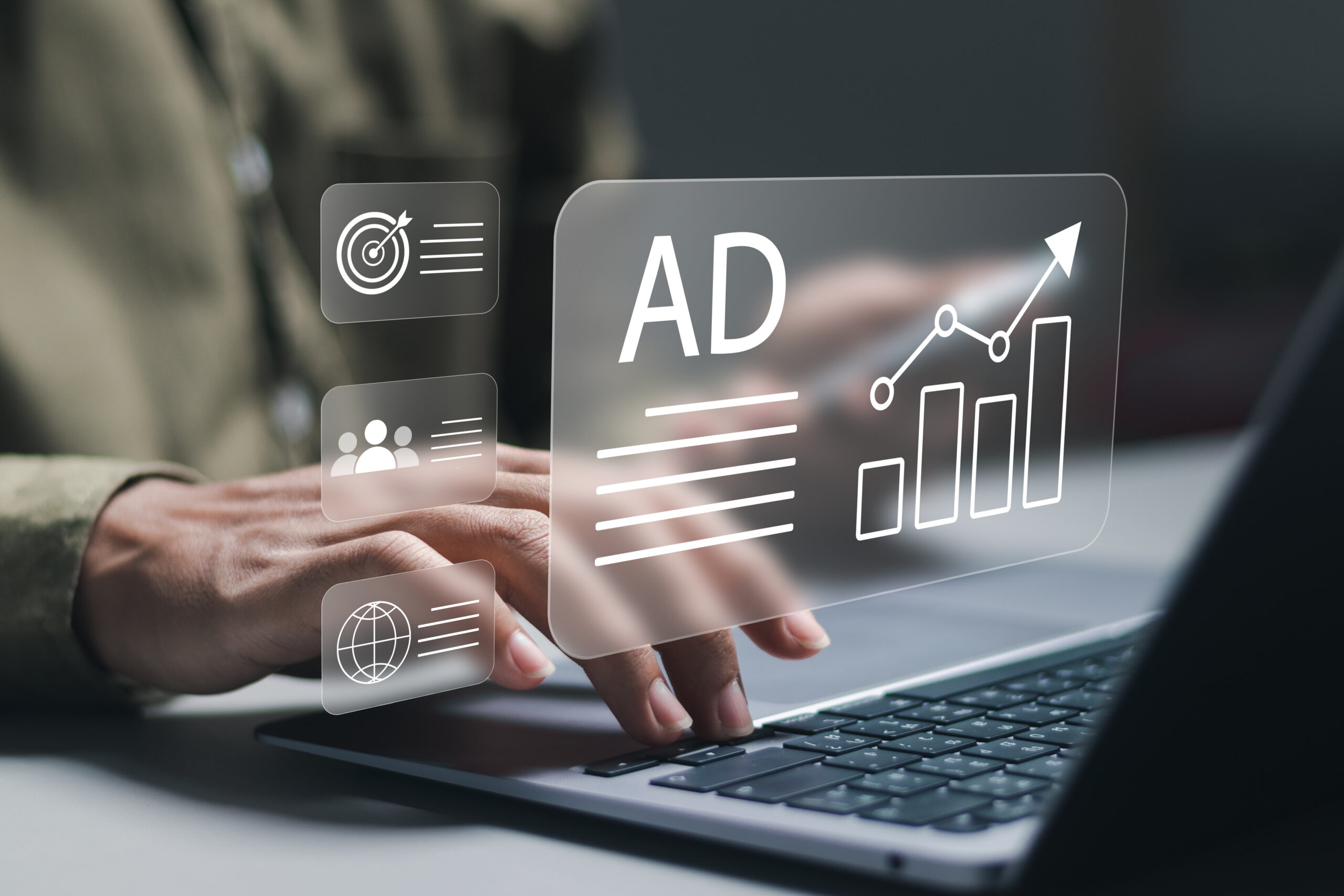
Mastering PPC in a Post-Cookie World: Targeting Strategies for Marketers
Pay-per-click (PPC) advertising is a mainstay of digital marketing. Across paid search, display advertising, social media and more, businesses appreciate the fact that they only pay when PPC ads are successful (i.e. when someone clicks on them), instead of simply for appearing on screen.
This makes it easier for marketing teams to control budgets and demonstrate ROI. Indeed, because PPC is based around user interactions, it fits well into today’s data-driven approach to marketing, with tracking and insight across customer journeys of paramount importance.
As with all forms of digital marketing, targeting is a big deal in the world of PPC. Knowing which ads to put in front of the right people at the right time vastly increases the chances of securing clicks and conversions. But for much of the history of PPC advertising, such targeting has relied on gathering data about web users, using what is known as browser cookies, and using that data for ad placement.
However, rising privacy concerns over the use of certain types of cookies have triggered a major shake-up. Some web browsers started blocking advertising cookies pre-COVID. The last straw for the practice was rung when Google, operator of the world’s most browser, Chrome, announced it would follow suit.
Ever since the big question on every marketer’s lips has been – how can we continue to target our campaigns effectively?
As a provider of PPC management services, Key Element has seen a lot of changes in digital advertising over the past five years and more. But one thing we’ve learned is that targeting is not only possible in the post-cookie world, it’s possible to make it even more effective. Here is how.
The Rise of the Cookieless World
But let’s start at the beginning. What are cookies, exactly, and what’s the issue with them?
Cookies are small HTTP files that capture and store information in a web browser. In a marketing context, they capture information about a web user’s behaviour that can be used to personalise the browsing experience. Whenever your log-in details are stored, or you return to an ecommerce site to find items you added to a cart on your last visit still there – that’s cookies at work.
We’re also all familiar with the experience of landing on a website and suddenly seeing ads that correspond to what we were looking at online previously. Again, that’s cookies at work. But while storing log-in details and browser settings might be useful, seeing ads based on your browser history is an experience that unnerves a lot of people. And it raises legitimate questions about the gathering, sharing and use of personal data online.
The networks that place digital ads (Google Ads is a prominent example) have long used browser cookies to farm information about what people are doing online form targeting. These are known as third-party cookies because they don’t come from the domain of the website a web user lands from. They come from the ad network.
If the website you land on uses cookies to collect browsing data (and tells you about it), that’s one thing. But if the cookies come from elsewhere, web users have the right to ask where their data is going, who has access to it, and how it is being used.
The argument has been more or less settled by Big Tech falling in line with the pro-privacy camp. Despite also operating the world’s largest digital advertising network, Google started to phase out third-party cookies on Chrome this year, a process it says will be completed by 2026.
Rethinking Targeting Strategies in a Cookieless World
PPC might mean advertisers only have to pay when they get clicks. But without clicks, advertising campaigns become redundant. And getting clicks isn’t easy.
Across social media channels, retail networks and general display ads, click-through rates (CTRs) are typically fewer than one click per 100 impressions. For paid search, the best-performing PPC channel in terms of CTR, the rate still only hovers between 1% and 2%.
Marketers need every bit of help they can get to maximising these CTRs. Ad targeting is a tried and tested tool. A third of people say they click ads in search engines because they directly correspond to their search queries.
Targeting is possible in a post-cookie world. Marketers just need to embrace new strategies to achieve it. Here are three to get started with.

First-Party Data Targeting: Putting Your Own Data to Work
Third-party cookies may be on the way out. But there are no such privacy concerns around online businesses collecting data directly about their website visitors and would-be customers (assuming you are upfront and transparent about it, of course, and get consent).
This is known as first-person data. First-person data gathering is already part and parcel of the everyday operations of pretty much every business that has an online presence. It comes via sales and other interactions that feed into your CRM. It comes via web tracking and analytics. It comes from getting your audiences to sign up for email newsletters or special offers or loyalty/VIP programs. It comes from the interactions you have with people on social media.
For all of the above reasons, most businesses know a lot about their customers. But how do you make this insight work for ad targeting?
With third-party cookies, businesses could sit back and let the ad networks do all the work. It was the networks that tracked user behaviour online and used the data they gathered to put what they saw as the right ad in front of the right people.
With first-person data, businesses have to play a more active role. They’re the ones that hold all the data on their customers. It’s up to them to feed it to the networks so their ads get shown to the right people.
In reality, it’s not that much more work. Google Ads already has an AI-powered automated ‘smart bidding’ engine that takes your first-party data and lets its Machine Learning algorithms work out where and when to show your ads to have the biggest impact.
Sure, it’s not quite the same as a person reading about the latest smartphone release, and then seeing a panel of phone ads on the next page they visit. But that’s actually a rather blunt approach to ad targeting, Careful use of first-person data can be much more nuanced and sophisticated. Especially with AI involved, it can allow you to dig much deeper into the habits and preferences of your audiences, and lead to much more precise and personalised targeting.
Cohort-Based Targeting: Finding People Just Like Your Customers
Targeting using first-person data is a powerful way to replace third-party tracking with detailed insights about people who have already engaged with your business in one way or another. It therefore makes sense that it works well for targeting adverts at existing customers, or at least people you already have some sort of relationship with.
But part of the job of marketing is to grow your audiences and attract new customers, not just maximise the value of existing ones (although this is often cheaper and offers better ROI than the hit-and-miss world of audience growth). So without in effect spying on their online behaviour, how can you otherwise target new prospects you know nothing about?
The answer is to use your first-person knowledge to find other audience groups that share similar characteristics. This is known as cohort targeting. Once you understand the behaviour, demographics, preferences and interests of present customers, you can target audiences that share similar characteristics.
Contextual Targeting: Reading the Digital Room
Years and years of third-party cookies dominating the digital advertising space have conditioned us to think of targeting in terms of user behaviour. But it doesn’t have to be that way at all.
Contextual targeting simply means matching the subject matter of an advert to the content (or ‘context’) of a web page. It’s an elegantly simple idea that has found renewed impetus in the post-cookie world. You don’t always need to know the ins and outs of what a person likes, thinks and gets up to online to target an advert at them effectively. If they’re on a website looking up camping spots, there’s a good chance they might be open to the idea of seeing ads for camping equipment.
In terms of how contextual targeting works, it’s not dissimilar to paid search advertising. Paid search (and organic search optimisation) is built around keywords. You match keywords to your ad, so the search algorithms know which search results to show your ad with.
Contextual targeting relies similarly on semantic understanding, or helping computer algorithms understand the context you want your ads to appear in. In this case, you use keywords and tags to describe the sort of page content you want your ad to appear next to. The placement algorithms used by ad networks use that information to find the right matches.
Summary
The demise of third-party cookies has certainly changed the digital marketing landscape. But digital marketers should embrace them as positive changes.
For one, paying attention to people’s legitimate concerns over data privacy opens the door to more constructive, collaborative relationships between brands and their customers that are based on transparency and trust. The stark truth is, that while advertising remains an essential tool in the marketing armoury, consumer trust in advertising has fallen apart in the digital era. The way to rebuild that is through constructive engagement, involving customers in the advertising process, and ultimately putting ads in front of them that they find relevant and useful. That will in turn drive conversions and ROI.
Switching from reliance on third-party tracking cookies to transparent, honest first-person data gathering is an essential first step. But going forward, effective targeting of PPC campaigns will be most effective when it blends multiple tactics together. Cohort-based targeting extends the value of knowing who your customers are in fine detail, opening the door to winning new customers in a targeted way as well as locking on loyalty from existing ones. Both approaches are complemented by contextual targeting, which reminds marketers that, especially in today’s omnichannel world, where you focus your activity is just as important as who you aim it at.
Looking for a PPC agency in London? Get in touch with our team to talk post-cookie targeting and find out how else we can help your advertising campaigns thrive.



